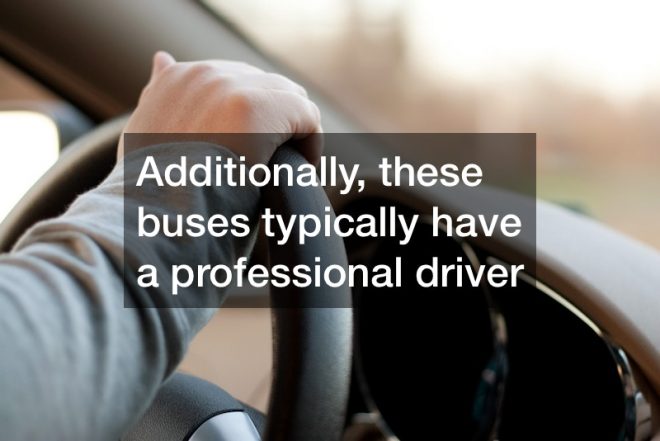
Many shoppers shy away from used cars because they see them as risky propositions. They are wary of hidden issues that may cause the vehicle to break down soon after leaving the lot. We understand those concerns and can hardly blame people for harboring them. However, there are also some real gems that end up on secondhand car dealership lots. Check out these key qualities in a used car if you want to unearth the real gems!
1. Choose a Certified Pre-Owned Vehicle

Let’s start by highlighting what is arguably the easiest way to find a good secondhand vehicle. The next time you visit a dealership, mention that you want to see their collection of certified pre-owned vehicles. Shopping from that vehicle selection ensures you’ll find something of high quality.
Are you unfamiliar with the term certified pre-owned vehicle? According to Car and Driver, a certified pre-owned vehicle is a used automobile that has been confirmed to be in top condition by its manufacturer. A manufacturer will do more than offer their word that the certified pre-owned vehicle is still in terrific shape. The company in question will even back up its assertion by providing a factory warranty.
Certified pre-owned vehicles must clear a high bar before they receive that designation. Manufacturers assign technicians to evaluate those cars closely, and they reference over 100 maintenance areas while doing so. If the vehicle does have some issues, the manufacturer will take the initiative and repair them. The manufacturer will also offer a detailed history of the car to prove that it is still in good condition.
You should take a keen interest in certified pre-owned vehicles because they make your evaluation easier. The manufacturer already went through the trouble of prepping and researching the vehicle. Moving forward with a purchase is a risk-free proposition because you already know it features the qualities you need in a used car.
2. Look for Used Vehicles With Salvage Titles Not Caused by Significant Damage
While shopping around for secondhand cars, you may find some dealerships with signs up stating ” repairable salvage SUVs for sale.” The presence of the word “salvage” in that sign may be giving you pause. You may think of it as one of the qualities you absolutely do not want to see in a used car. Before you dismiss those vehicles altogether, let’s take this opportunity to discuss what vehicles with salvage titles actually are.
Most people assume a vehicle with a salvage title is damaged beyond repair. However, that’s not actually the case. A salvage title is usually assigned to a vehicle when an insurer has designated it as a total loss. While it’s possible that the car is a total loss due to damage, there are other possible explanations as well.
A previously stolen car may get that salvage title because the insurer already completed the payout before it was recovered. Some cars also get that title due to age. Insurers would rather write those older vehicles off as losses instead of paying for their more expensive repairs.
Now that you know what the salvage title means, you can use that knowledge to your advantage while shopping. Ask the salesperson why a specific vehicle has that title and determine if there’s a deal waiting for you. Even paying for something like trailer repair is not a big deal if the vehicle is still in good enough condition.
3. Prioritize Secondhand Cars With Reasonable Mileage

Next up, let’s talk about mileage and why it’s one of the qualities you should evaluate in a used car. When it comes to mileage, it’s easy to assume that a higher number is worse for a secondhand vehicle. However, that’s not always the case.
There’s a big difference between a car that has been driven regularly and one that has been worn down due to overuse. We can tell the difference between those two by looking at a used car’s mileage. Generally speaking, you want a car with mileage that hovers close to where it should be based on its age.
According to the U.S. Department of Transportation, the average annual mileage for drivers is 13,476. The ideal mileage would be 13,476 multiplied by the used car’s current age. The secondhand car should still be good to go if its mileage is close to whatever number you get from that formula.
Be wary of a secondhand vehicle with mileage well over the ideal mark. A vehicle that has been driven that much may already need some diesel repair services. Look for an alternative that doesn’t have as much road experience.
Then again, you don’t want a hardly used vehicle. Some of the components in those vehicles can become brittle with age, and they may break sooner rather than later. Even if the replacement components are relatively affordable, the labor expenses may cost you hundreds of dollars. Pay close attention to the used car’s mileage to ensure its components are still in decent condition.
4. Examine the Used Car’s Service History
Detailed documentation is among the things you should look for in a used car. There are different documents you should review. You should always check out a secondhand car’s service history whenever it’s available.
Service history outlines the different repairs a vehicle has received over the years. It should detail work done on the vehicle’s axles, tire alignment, and other similar repairs. A service history is an important reference point for buyers.
For starters, you can use the information in the service history to determine what kind of maintenance the vehicle has received. A long service history isn’t necessarily a bad thing. It may even be regarded as a positive because it shows that the original owner took good care of their vehicle.
You should also closely examine the service history and check if any of the car’s major components have undergone repeated repairs. While the engine being repaired a few times isn’t an automatic red flag, you should be wary if the same issue is emerging time and time again. There may be something seriously wrong with the vehicle that will only become a more significant issue moving forward.
5. Consider a Secondhand Vehicle’s Brand

Vehicle brands are more than just tools clever advertisers leverage to get more sales. They are also hallmarks of quality. Certain manufacturers are famous for producing high-quality vehicles, and their products are always in demand.
You cannot disregard brands while shopping for a secondhand vehicle. It’s arguably one of the best reference points to consider in a used car because manufacturing quality can neutralize many of the issues drivers create. So, which brands should you prioritize while looking for a used car?
According to J.D. Power, the highest-ranked brands in terms of vehicle dependability are Lexus, Genesis, Cadillac, and BMW. Those are all luxury vehicle brands. If those luxury brands were out of your price range, you might be able to find a more reasonable deal now that you’re shopping in the secondhand market.
Since you specifically went after famously dependable vehicles, you can expect them to work just fine even if they’re not brand new. You can also pay for Lexus, Genesis, Cadillac, or BMW repair and get the vehicle back in prime condition. Those repairs may be a bit on the pricey side, but they are worth paying if it means your secondhand luxury vehicle can work properly.
6. Confirm if the Used Vehicle Can Still Be Upgraded
People buy used cars because they want something affordable. Since a brand new car is out of their price range, they want the next best thing, which is typically a secondhand vehicle that’s still in good condition. There’s nothing wrong with prioritizing price tags while perusing dealerships for used cars. That said, you don’t want a low price point to distract you from the notable issues in a used car.
Some secondhand vehicles may no longer be suitable for upgrading. That may not seem like a big deal if the vehicle still works fine, but it can grow into a real problem down the line. The vehicle in question may no longer be compatible with truck lift kits. If that’s the case, the secondhand vehicle may not be usable in your neighborhood.
When choosing a used forklift, many shoppers tend to scour the selection of electric models because they are eco-friendly. Consider that as well before you buy a secondhand vehicle. The vehicle may be a huge polluter unfit for daily usage. It may only become usable after it’s upgraded.
7. Determine How Efficient the Pre-Owned Car Is

Many folks who shop for pre-owned vehicles make the mistake of focusing only on the price tag. The secondhand vehicle’s price tag is certainly important, but one would be remiss to think that it is the only car-related expense you’ll have to worry about. Once that car is off the lot, you’ll have to pay for its fuel.
Whatever money you were able to save by getting a cheap, secondhand car may end up being directed to your fuel expenses anyway. You may even have to pay more than you allotted for fuel because your new purchase is a gas guzzler. Such a scenario would not be ideal, and it’s the main reason why you should fuel efficiency is one of the things you should look for in a used car.
Check what kind of fuel economy a secondhand car provides before buying it. A less-than-stellar fuel economy rating doesn’t automatically mean a car is no longer worth purchasing. You just have to check if you can improve its efficiency by paying for an upgrade like a new muffler install.
8. Inspect the Used Vehicle for Leaks
Leaking is almost always a bad sign. It’s a bad sign when your AC unit or faucet is leaking, and the same can be said for a secondhand car. Car leaks are problematic because they point to serious structural issues.
Examples of fluids that may leak from vehicles include engine oil, brake fluid, and water. Water leaks are often symptomatic of issues affecting the car’s air conditioning. Take the time to examine those leaks further before you make a final decision regarding the vehicle.
You should also check just how bad those leaks are. Ask if an HVAC company can inspect the vehicle to confirm the air conditioning leak can still be repaired. Replacing the HVAC system may be required if the leaks can no longer be repaired. Factor that into the equation before buying the car.
Leaks stemming from the engine or brakes deserve even more attention. Mechanics should closely inspect those to confirm if they could make the vehicle dangerous to operate. The last thing you want is a secondhand vehicle that is susceptible to crashing.
9. Evaluate the Car’s Appearance
Lastly, take a long look at the car’s appearance while deciding whether to purchase it. Appearance probably isn’t one of the things you should prioritize in a used car, but it still matters. You’re likely getting that secondhand car because you need something for your regular trips. Would you be okay driving around in a car that poorly suits your sense of style?
On top of that, the car’s appearance is an important factor to evaluate because it hints at its current condition. Rust spots and cracks along the windshield are signs indicating that a car has seen better days. They are potential indicators that the vehicle you’re inspecting needs a lot of repairs.
The flaws in the car’s appearance don’t have to deter you from a purchase completely. Instead, you can point them out to the salesperson as reasons why they should offer you a better deal. Mention that they should give you a lower price since you still have to pay for necessary repairs.
A secondhand vehicle can be one of the smartest purchases you ever make. Ensure the qualities highlighted in this article are present in a used car before you buy it. Come visit our website as well if you’re searching for more car-buying tips!



